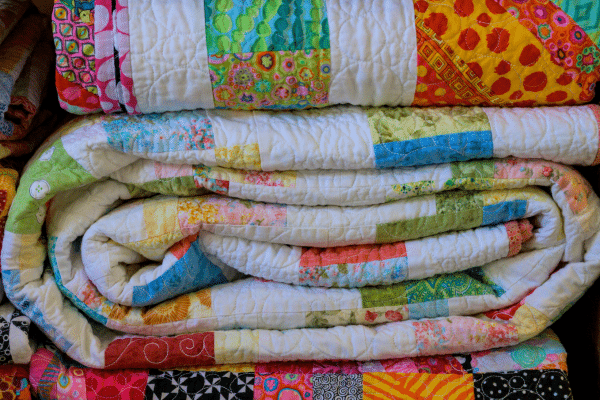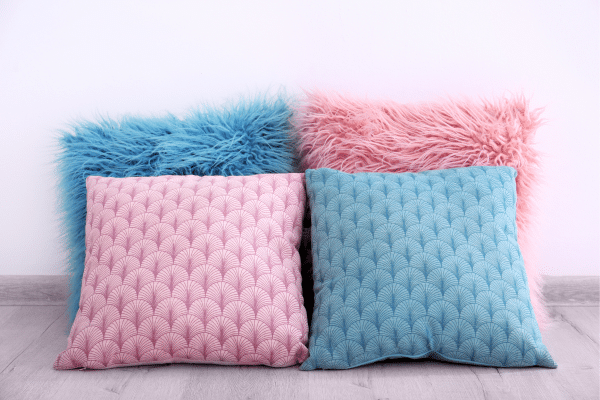Repurposing old sweaters offers a sustainable solution to reducing textile waste, turning what was once destined for the landfill into stylish and functional items. This approach not only conserves resources but also unleashes creativity, allowing for the transformation of forgotten garments into treasures. By choosing to repurpose, individuals can contribute to a more sustainable world, one sweater at a time. The process involves reimagining the potential of woolen fabrics to create a variety of new products, from fashion accessories to home decor. Each repurposed item carries a story, blending the past with the present in a harmonious mix of utility and aesthetics. Engaging in this practice not only benefits the environment but also adds a personal touch to everyday items, making sustainability both practical and personal.
Contents
Scarf

Selecting the right sweater is crucial when considering a transformation into a scarf. The ideal candidate is a sweater with a soft texture and a pattern or color that complements various outfits. Once chosen, the process involves carefully removing sleeves and unraveling seams to create a flat piece of fabric. This fabric then serves as the base for the new scarf, allowing for customizations such as fringe or embroidery to enhance its appeal. The transformation not only breathes new life into an old garment but also results in a unique accessory that carries personal significance.
Creating a scarf from an old sweater involves not just cutting but also a bit of sewing to ensure the edges are neat and fray-free. Depending on the material, some sweaters might require a backing fabric to provide stability and prevent stretching. Techniques like hemming or adding a contrasting border can turn a simple piece of sweater fabric into a chic and cozy scarf. This project offers a satisfying way to recycle a beloved sweater, keeping it close in daily life in a new form.
Quilt

Crafting a quilt from old sweaters is an excellent way to preserve memories while creating something both beautiful and functional. The first step in this creative journey involves collecting various sweaters, ideally with complementary colors and textures, to form the quilt’s pieces. Cutting these garments into squares or rectangles, while mindful of maintaining uniformity in size, lays the groundwork for the quilt’s design. This patchwork of different knits brings a tactile and visual richness to the final product, encapsulating stories within each stitched piece.
The assembly of a sweater quilt requires patience and precision, as the diverse textures and thicknesses of sweater fabrics pose unique sewing challenges. Laying out the pieces to form a pleasing pattern before stitching them together allows for visualizing the final quilt and making necessary adjustments. The backing material, typically a sturdy fabric, ensures the quilt’s durability and comfort. Completing a quilt from old sweaters not only results in a warm, inviting blanket but also stands as a testament to sustainable crafting and ingenuity.
Beanie

Transforming a sweater into a beanie requires identifying a piece with sufficient elasticity to snugly fit the head. The fabric’s stretchiness is essential for the beanie to maintain its shape and provide warmth. After selecting a suitable sweater, the next steps involve cutting a portion of the sweater that aligns with the desired size of the beanie, considering the need for a fold-up brim for extra ear protection. Sewing the cut edges together forms the beanie, with optional steps to customize its look, such as attaching a pompom on top or incorporating a fleece lining for added warmth.
The joy of crafting a beanie from an old sweater lies in the ability to personalize it. Choices of color, pattern, and additional decorative elements mean that each beanie can reflect individual style and purpose. This approach not only ensures a unique accessory but also promotes a sustainable fashion ethos. The process is relatively simple, encouraging even those with basic sewing skills to engage in this eco-friendly activity. The finished product, a testament to resourcefulness, provides comfort and style during colder seasons.
Pillow Covers

Old sweaters can find new life as cozy pillow covers, bringing a touch of warmth and comfort to any living space. The first step is to choose sweaters with appealing textures and colors that match the room’s decor. After measuring and cutting the sweater fabric to fit the pillow insert, sewing the edges together creates a snug cover. The transformation allows for the sweater’s pattern or knit to become a focal point of the pillow, adding a unique and personal touch to home furnishings.
Making pillow covers from old sweaters is not only an economical way to refresh home decor but also an environmentally friendly choice. The process can accommodate various sizes of pillows, enabling a cohesive look throughout a room or across furniture pieces. Adding buttons or zippers can make the covers removable and washable, ensuring they are practical for regular use. This repurposing project combines creativity with utility, resulting in personalized decor items that are both beautiful and functional.
Mittens

Crafting mittens from an old sweater involves more than just cutting fabric; it requires a thoughtful approach to ensure warmth and comfort. The ideal sweater is thick and soft, providing the necessary insulation for cold weather. Tracing a hand outline on the sweater allows for a custom fit, and cutting two mirrored pieces per mitten forms the front and back. Sewing these pieces together with a lining fabric can increase warmth and durability. The completed mittens not only serve a practical purpose but also carry the sentimental value of the original garment.
The process of making mittens from old sweaters is an opportunity to engage in sustainable fashion. By repurposing material that would otherwise be discarded, this activity supports environmental conservation efforts. It also allows for artistic expression, as each pair of mittens can be adorned with unique embellishments such as embroidery or appliqué. This project demonstrates how practical items can be crafted from seemingly worn-out clothing, providing both warmth and style in the colder months.
Pet Bed

An old sweater can become a comfortable and attractive bed for a pet with minimal effort and expense. Larger, chunkier sweaters are ideal for this project, providing ample fabric to create a soft, cushioned area for pets to rest. The process involves stuffing the sweater with a filling material, such as old clothes or pillows, then sewing it shut to form a cozy bed. The result is a comfortable, eco-friendly sleeping spot that pets will love, infused with the familiar scent of home.
Creating a pet bed from an old sweater is not only economical but also reduces waste by repurposing unused clothing. This project can be customized to fit any pet size, from small cats to larger dogs, by selecting a sweater of the appropriate dimension. Additionally, the bed can be made more durable by reinforcing seams and choosing robust materials for stuffing. This approach to pet care emphasizes the value of recycling and the joy of providing comfort to animal companions in a sustainable manner.
The Bottom Line
Repurposing old sweaters into new, useful items is more than just a craft; it’s a sustainable practice that benefits the environment and nurtures creativity. Each project, from scarves and beanies to pillow covers and pet beds, highlights the potential in what might be considered worn-out or outdated. These activities encourage a mindful approach to consumption, prompting a reevaluation of how resources are used. The satisfaction derived from transforming an old sweater into something both beautiful and functional exemplifies the value of sustainable living, demonstrating that with a bit of creativity, the life cycle of a garment can be thoughtfully extended.